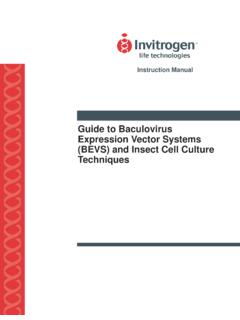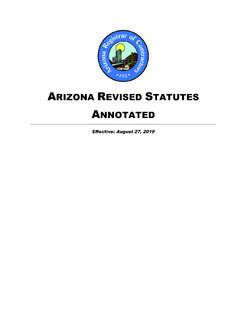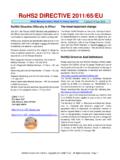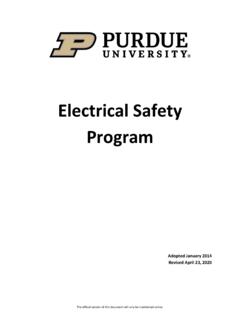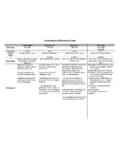Transcription of THE COMPETENCIES OF THE MODERN TEACHER
1 Part 2: Pre-Service and In-Service TEACHER Training 148 OLGA NESSIPBAYEVA THE COMPETENCIES OF THE MODERN TEACHER Abstract The principal aim of this study is to consider the COMPETENCIES of the MODERN TEACHER . To understand 21st-century instructional skills, we researched the following issues: students skills; levels of teachers professional growth; teachers pedagogical culture; pedagogical innovations, and 21st-century teaching COMPETENCIES . Keywords: teaching COMPETENCIES , cultural competency, talent, innovation, creativity, critical thinking, problem solving Inspire creativity, critical thinking, collaboration and communication so that students are ready for tomorrow's world.
2 We often hear about 21st-century learners and the knowledge and skills our students will need in the future. What about teachers? What instructional skills will 21st-century teachers need to prepare our students? How are they different from the skills teachers needed in the past? In recent years, the quality of education has significantly changed. If, previously, the university s major aim was that of providing students with certain types of knowledge that they were expected to apply later, universities today focuses primarily on life skills . Our aim is to teach students to obtain knowledge by themselves and to work in ways that enable them to come up with new ideas.
3 Generating new ideas is a key tenet of MODERN society. We need professionals who are culturally competent , talented, innovative and creative problem-solvers, skilled and critical thinkers. New technologies give an opportunity to encourage critical thinking. We must provide students with skills that will help them work collaboratively and sensitively in a team, become decision-makers, plan and manage their time effectively, listen to one another and choose the right communication strategy at the right time. Thereby, we have come to understand that, to meet these new teaching requirements, we need 21st-century skills.
4 TEACHER competence Before addressing the meaning of TEACHER competence, we must first establish the meaning of competence. Competency is a term used extensively by different people in different contexts; hence, it is defined in different ways. TEACHER education and job performance are two contexts in which this term is used. COMPETENCIES are the requirements of a competency-based TEACHER education and include the knowledge, skills and values a TEACHER -trainee must demonstrate for successful completion of a TEACHER education programme (Houstan, 1987 cited in 1).
5 Olga Nessipbayeva 149 Some characteristics of a competency are as follows: 1. A competency consists of one or more skills whose mastery would enable the attainment of the competency. 2. A competency is linked to all three of the domains under which performance can be assessed: knowledge, skills and attitude. 3. Possessing a performance dimension, COMPETENCIES are observable and demonstrable. 4. Since COMPETENCIES are observable, they are also measurable. It is possible to assess a competency from a TEACHER s performance. Teaching COMPETENCIES may require equal amounts of knowledge, skill and attitude, but some will not.
6 Some COMPETENCIES may involve more knowledge than skill or attitude, whereas, some COMPETENCIES may be more skill or performance based. Some scholars see "competence" as a combination of knowledge, skills and behavior used to improve performance, or as the state or quality of being adequately qualified and capable of performing a given role. The Occupational Competency movement initiated by David McClelland in the 1960s sought to move away from traditional attempts to describe competency in terms of knowledge, skills and attitudes and to focus instead on those specific values, traits, and motivations ( relatively enduring characteristics of people) that are found to consistently distinguish outstanding from typical performance in a given job or role.
7 The term "competence" first appeared in an article authored by Craig C. Lundberg in 1970 (cited in 2) titled "Planning the Executive Development Program", and then in David McClelland s seminal 1973 treatise entitled, "Testing for Competence Rather than for Intelligence" (cited in 2). The term has since been popularized by Richard Boyatzis and many others. Student skills The manifold complexities of today s society severely challenge individuals. What do these demands imply for those key COMPETENCIES that individuals need to acquire? Defining such COMPETENCIES can enable us to identify overarching goals for educational systems and lifelong learning and to evaluate the range of COMPETENCIES for the 21st-century TEACHER .
8 At first, we need to understand the skills and sub-skills students require for successful communication and personal development, those that should assure them a competitive advantage in life: Thinking and Problem-Solving - thinking logically - estimating and guessing - turning problems into opportunities Self Direction and Learning - developing memory - being assertive - making personal changes Collaboration - persuading others - working in a team - discussing alternatives - reaching compromises The COMPETENCIES of the MODERN TEACHER 150 Information and Research - understanding graphs - taking notes on a text - writing surveys - reporting information Organization and Planning - making plans - managing time - setting personal goals (cited in 3).
9 Teaching COMPETENCIES A competency is more than just knowledge and skills; it involves the ability to meet complex demands by drawing on and mobilizing psychosocial resources (including skills and attitudes) in a particular context. Competency is essential to an educator s pursuit of excellence. Teachers need a wide range of COMPETENCIES in order to face the complex challenges of today s world. Teaching competency is an inherent element of an effective training process, one that aspires to contribute to the welfare of a particular country or the world, itself. The central figures in the educational process are teachers.
10 The success of training and education depends on their preparation, erudition and performance quality. The teaching skills and life-long learning COMPETENCIES of professional teachers comprise the following: to perform complex pedagogical duties; to be well-spoken, in good mental and physical health, stable and tolerant; to have a propensity to work with the younger generation , good communicative and observational skills, tact, a vivid imagination, and leadership (Shmelev, 2002). During their professional careers, teachers pass through the following levels of professional growth to achieve the acme of professional competency.












